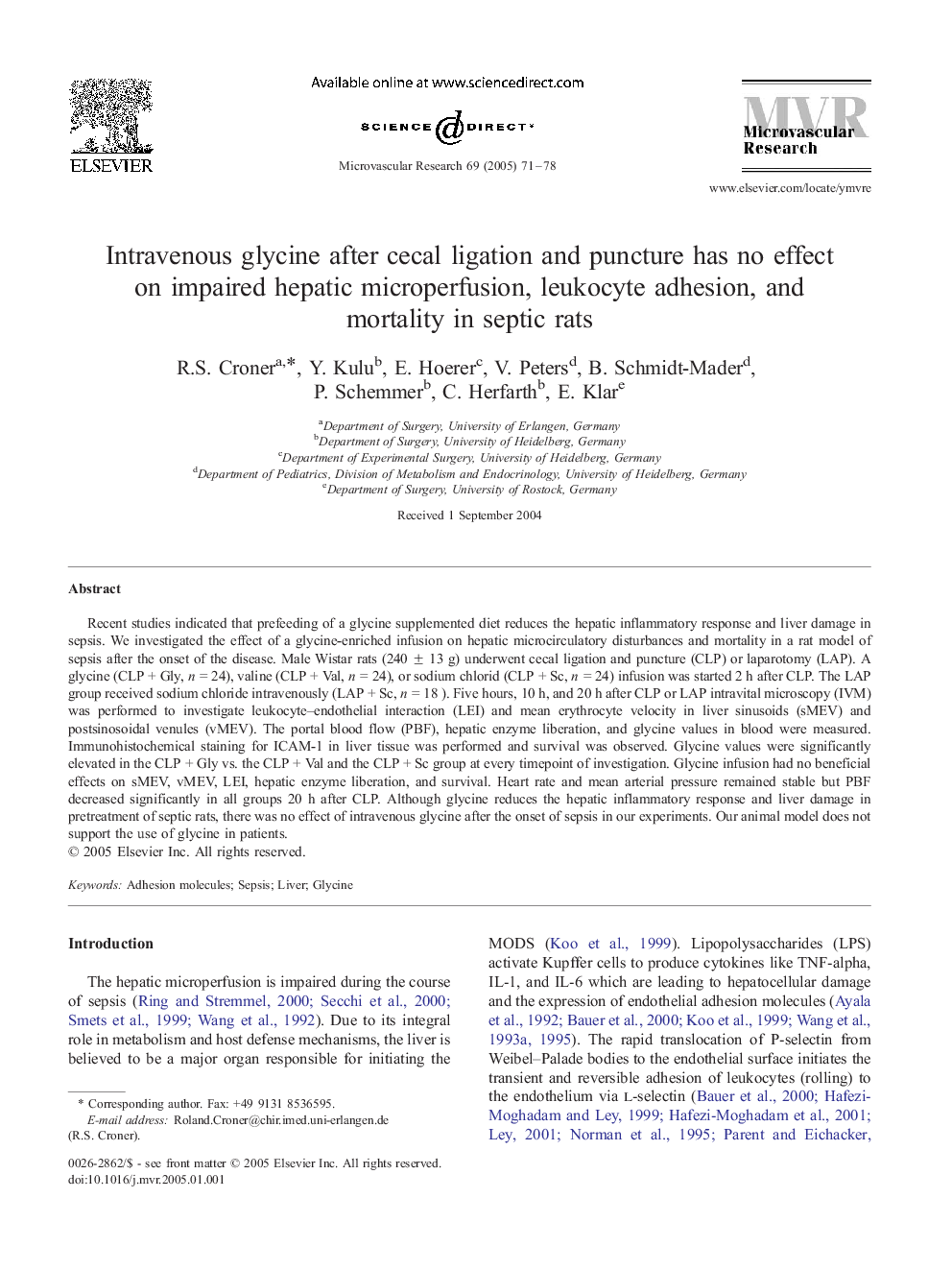| Article ID | Journal | Published Year | Pages | File Type |
|---|---|---|---|---|
| 9893135 | Microvascular Research | 2005 | 8 Pages |
Abstract
Recent studies indicated that prefeeding of a glycine supplemented diet reduces the hepatic inflammatory response and liver damage in sepsis. We investigated the effect of a glycine-enriched infusion on hepatic microcirculatory disturbances and mortality in a rat model of sepsis after the onset of the disease. Male Wistar rats (240 ± 13 g) underwent cecal ligation and puncture (CLP) or laparotomy (LAP). A glycine (CLP + Gly, n = 24), valine (CLP + Val, n = 24), or sodium chlorid (CLP + Sc, n = 24) infusion was started 2 h after CLP. The LAP group received sodium chloride intravenously (LAP + Sc, n = 18 ). Five hours, 10 h, and 20 h after CLP or LAP intravital microscopy (IVM) was performed to investigate leukocyte-endothelial interaction (LEI) and mean erythrocyte velocity in liver sinusoids (sMEV) and postsinosoidal venules (vMEV). The portal blood flow (PBF), hepatic enzyme liberation, and glycine values in blood were measured. Immunohistochemical staining for ICAM-1 in liver tissue was performed and survival was observed. Glycine values were significantly elevated in the CLP + Gly vs. the CLP + Val and the CLP + Sc group at every timepoint of investigation. Glycine infusion had no beneficial effects on sMEV, vMEV, LEI, hepatic enzyme liberation, and survival. Heart rate and mean arterial pressure remained stable but PBF decreased significantly in all groups 20 h after CLP. Although glycine reduces the hepatic inflammatory response and liver damage in pretreatment of septic rats, there was no effect of intravenous glycine after the onset of sepsis in our experiments. Our animal model does not support the use of glycine in patients.
Keywords
Related Topics
Life Sciences
Biochemistry, Genetics and Molecular Biology
Biochemistry
Authors
R.S. Croner, Y. Kulu, E. Hoerer, V. Peters, B. Schmidt-Mader, P. Schemmer, C. Herfarth, E. Klar,
